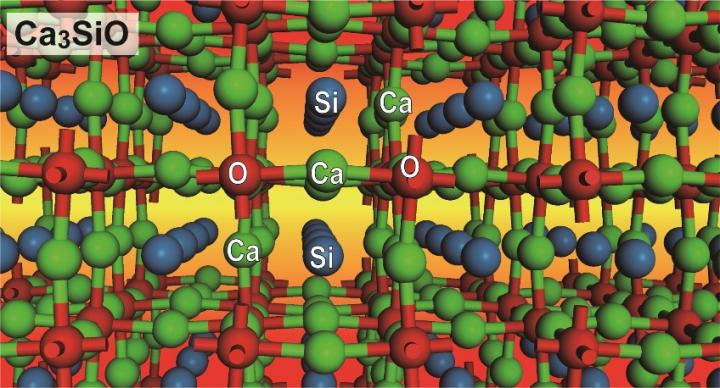New material for Near-IR components

Ca3SiO shows promise for infrared LED and infrared detector components
NIMS and the Tokyo Institute of Technology have jointly discovered that the chemical compound Ca3SiO is a direct transition semiconductor, making it a potentially promising infrared LED and infrared detector component. This compound is cheap to produce and non-toxic. Many of the existing infrared semiconductors contain toxic chemical elements, such as cadmium and tellurium. Ca3SiO may be used to develop less expensive and safer near-infrared semiconductors.
Conventionally, the semiconductive properties of materials, such as energy band gap, have been controlled by combining two chemical elements that are located on the left and right side of group IV elements, such as III and V or II and VI. In this conventional strategy, energy band gap becomes narrower by using heavier elements: consequently, this strategy has led to the development of direct transition semiconductors composed of toxic elements, such as mercury CdTe and GaAs.
To discover infrared semiconductors free of toxic elements, this research group took an unconventional approach: they focused on crystalline structures in which silicon atoms behave as tetravalent anions rather than their normal tetravalent cation state.
The group ultimately chose oxysilicides (e.g., Ca3SiO) and oxygermanides with an inverse perovskite crystalline structure, synthesised them, evaluated their physical properties and conducted theoretical calculations. These processes revealed that these compounds exhibit a very small band gap of approximately 0.9 eV at a wavelength of 1.4 μm, indicating their great potential to serve as direct transition semiconductors. These compounds with a small direct band gap may potentially be effective in absorbing, detecting and emitting long infrared wavelengths even when they are processed into thin films, making them very promising near-infrared semiconductor materials to be used in infrared sources (e.g., LEDs) and detectors.
In future research, the team plans to develop high-intensity infrared LEDs and highly sensitive infrared detectors by synthesizing these compounds in the form of large single-crystals, developing thin film growth processes and controlling their physical properties through doping and transforming them into solid solutions. If these efforts bear fruit, toxic chemical elements currently used in existing near-infrared semiconductors may be replaced with non-toxic ones.
'Inverse Perovskite Oxysilicides and Oxygermanides as Candidates for Nontoxic Infrared Semiconductor and Their Chemical Bonding Nature' by Naoki Ohashi et al; Inorganic Chemistry, a journal of the American Chemical Society, December 10, 2020

































